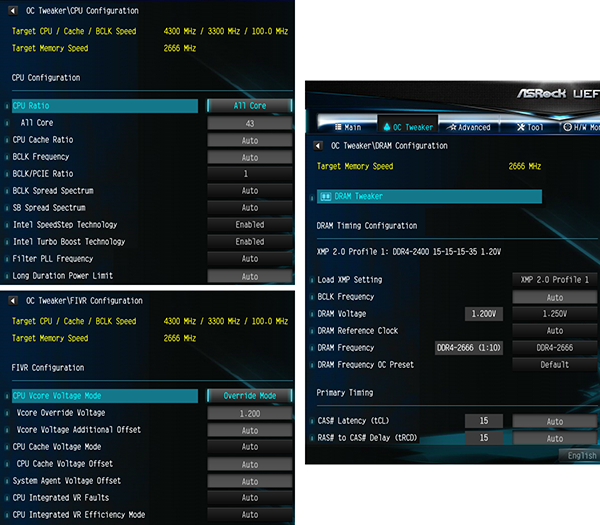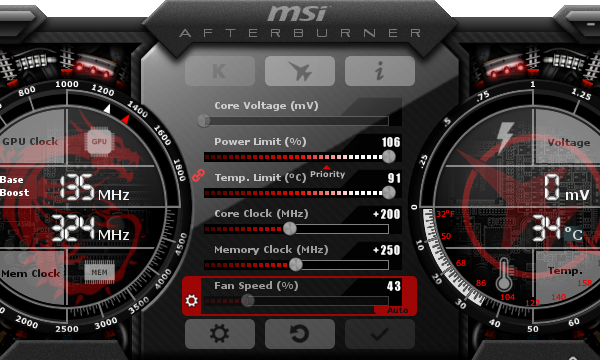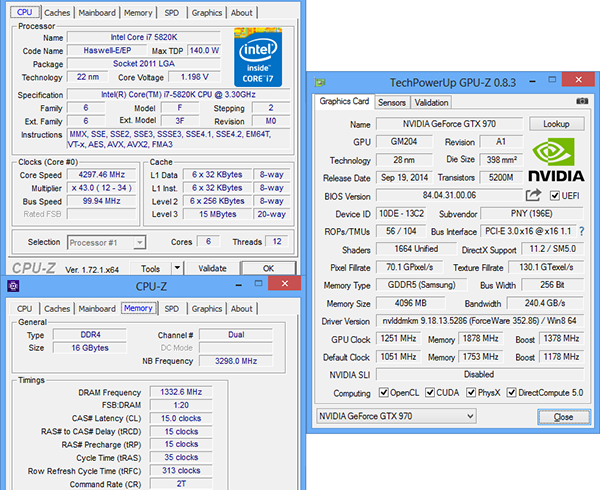System Builder Marathon Q2 2015: $1600 Mini Performance PC
We’ve seen how far I can push a six-core Haswell-E in our full-sized performance build, but can the same performance level fit into a mini cube?
Overclocking
I know all the big system builders were expecting a huge overclocking failure from such a tiny machine, but the proof of its capabilities are in the numbers: Configured as an intake fan, the Corsair H60 flowed enough air to support this CPU at 1.200V and full load.
Unlike my big machine, the CPU in this one is friendly-enough to run a fixed 4.30 GHz at 1.20V, compared to the ATX system’s thermally-restricted variable frequency of 4.0 to 4.3 GHz at 1.22 volts. The smaller systems’ lower temperature is partly due to its lower voltage, and partly due to the larger machine’s underperforming CPU cooler.
Stuffed into the bottom of the case and twice the density of the model used in the big system, the G.Skill DDR4-2400 used in this build didn’t overclock very easily. Perhaps low airflow at the bottom was part of the problem, but the memory didn’t overclock any better at 1.35V than it did at 1.25V. Eventually I settled for DDR4-2666 CAS 15, which was the starting point for the big machine. Worse still was that the smaller motherboard supports only two DIMMs for dual-channel mode, where my ATX PC used a quad-channel kit appropriately.
One might have expected the graphics card to overclock worse in the small machine, due to the tight confines surrounding its top-mounted orientation. Yet we were surprised once again as the GPU and graphics RAM each clocked 50 MHz higher on the smaller machine, which in turn caused it to finally reach the point of thermal restriction, which in turn forced me to go into advanced fan settings and lower the 100% fan level from 90° to 80 °Celsius.
Better overclocking due to a better CPU cooler, better CPU sample, better graphics card sample and, almost-unbelievably, adequate airflow.
Get Tom's Hardware's best news and in-depth reviews, straight to your inbox.
-
UltimateDeep Baby PC able to out-overclock the Papa PC, gosh, this shouldn't be happening but it did anyway!Reply -
RazberyBandit Tricky tricky tricky tricky!Reply
Relate to a younger generation? A reader would have to be at least 35-years old (and into Hip-Hop) to have gotten that reference...
You Be Illin' =) -
Crashman Reply
I'm just fighting for your right to party. No need to take this on all by yourself, any more.16145478 said:Tricky tricky tricky tricky!
Relate to a younger generation? A reader would have to be at least 35-years old (and into Hip-Hop) to have gotten that reference...
You Be Illin' =)
-
Aspiring techie Sweet. The mini itx form factor doesn't limit performance at this price level. I guess you learn something new every day :)Reply -
daveys93 "High-resolution performance might have been better still had that machine contained a pair of R9 290X cards rather than a pair of GTX 270s."Reply
Typo? I think you mean 970s. -
atheus Again you sacrifice cooling performance to pick up an optical drive. Are you being paid off by big optic...oil?Reply
Admit it, you just chose that motherboard because it lets you plug this bad boy in:
-
Nythious It's about time people start realizing that smaller cases restrict the impact of ambient temperatures because the total air volume is recycled faster than larger cases.Reply



